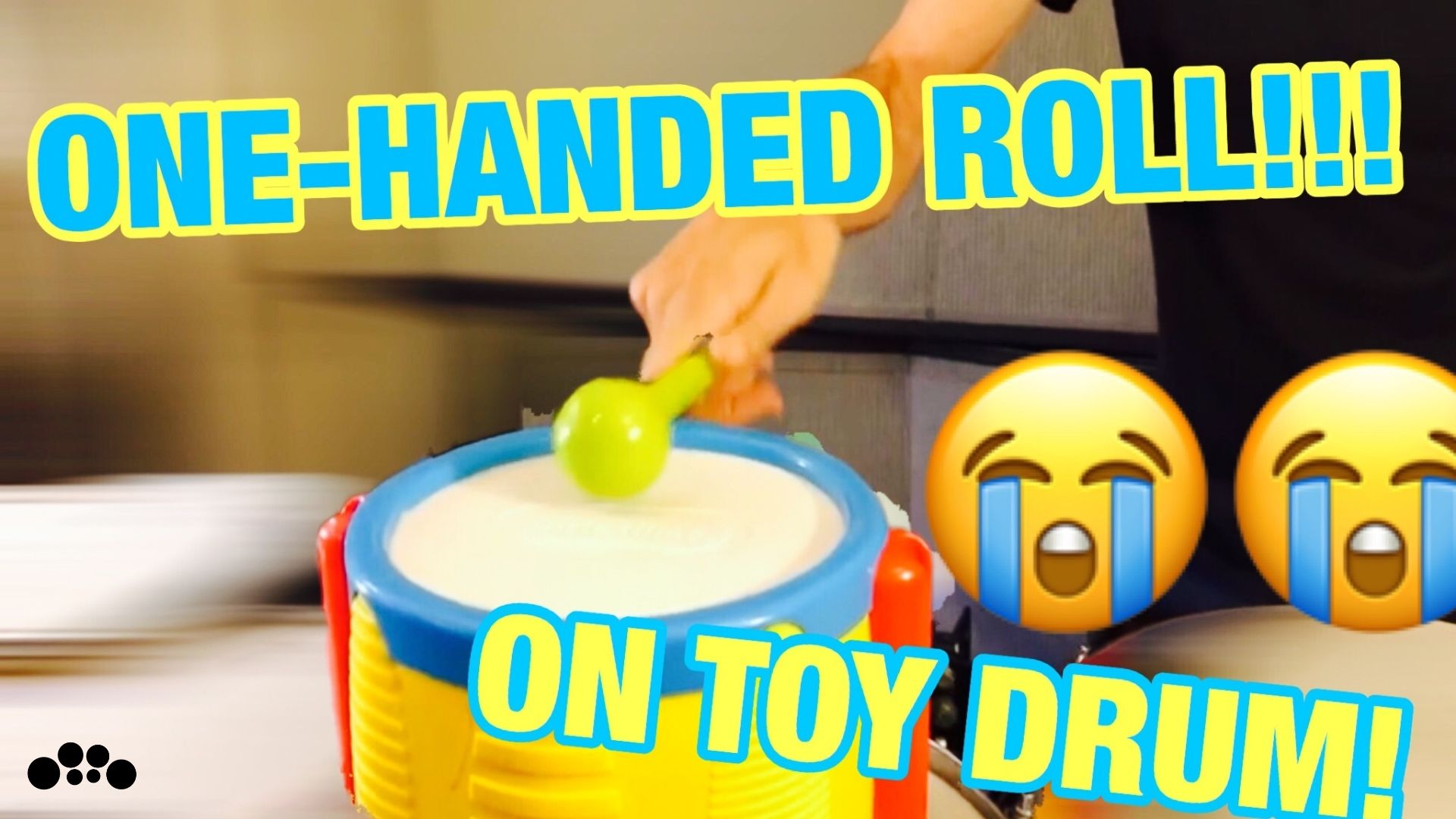Ah, the one-handed drum roll is one of many things that, to the untrained eye, looks like a magic trick. I still remember the first time I saw it (see Pat Fitzgibbon below). It completely blew me away! How could he possibly be playing that many notes, so quickly, with just one hand?
In this post, I break down how to play one-handed drum roll, so you too, can become a drumming magician!
Origins of the One-Handed Drum Roll
The exact origins are unknown, but the technique, aka gravity roll, is known to be used by Buddy Rich and other jazz drummers in the ’40’s and ’50’s. It wasn’t until the next century that the one-handed roll made it to the drumline world. Enter snare prodigy, Pat Fitzgibbon.
Pat Fitzgibbon I&E Snare Solo 2001 Champion
This is the first time I had ever seen a one-handed roll, from the man who holds the title for most I&E snare wins, Pat Fitzgibbon.
This Madison Scouts snare drummer has some monster chops, but also a ton of style, control, and innovation. Unfortunately, the video of him performing his solo was taken down from YouTube. Oh, copyrights!
Mike Hodges 2003 PASIC Tenor Solo Champion
Just a couple years later, my old Cavies seat partner and all around awesome guy, Mike Hodges, effortlessly incorporates the one-handed drum roll into his PASIC solo.
Mike has such groove! I love how he keeps his left hand busy while playing the roll with his right.
Bluecoats Snareline 2007
Four years after that, the 2007 Bluecoats, with my old Cavies staff at the helm, wrote in a one-handed drum roll into the snare show music!
It’s a little slower than some of the other rolls, but that’s understandable since nine guys are playing it at once. One-handed rolls can be pretty easy to play by yourself at random speeds, but playing it perfectly in time with eight other people is another story!
Now that we’ve seen it done, let’s learn how to play a one-handed drum roll
The key to playing a one-handed drum roll is making use of the rim. As tenor drummers, usually we want to avoid rims, but this time, rims are our dearest friends! The main idea is to use the rim as your fulcrum. Think of the stick as a seesaw, with the rim as the pivot point.
There are two strokes
Down Stroke
The down stroke is basically a rim shot, hit the drum head and rim at the same time.
Now, here’s the key point. After contact with the rim, keep pushing your hand down, so it goes below the rim. The stick should still be resting on the rim, with the tip pointing up at a 30-45 degree angle. This is the first of two strokes.
Up Stroke
For the up stroke, bring your hand back up above the rim. Using the rim as the pivot point, the stick should hit the head a second time.
Rinse and Repeat
That’s it! Repeat this motion over and over again! The technique will feel awkward at first, but start slowly and work on controlling the stick as much as possible. It can be easy to just throw the stick down and see what happens, but this is not what we want.
As you get comfortable, slowly increase the speed. To play in time, focus on when your hand is at its highest and lowest points. These moments are where you line up with your metronome.
If playing sixteenth notes, your hand will be at it’s lowest on the downbeats and the “ands”, highest on the “e’s” and “a’s”.
As always, stay locked in with the metronome and strive for perfect 16th notes, 32nd notes, etc. Before long, you’ll be ready to impress all of your fellow drummers with this one-handed drum roll magic trick!
If you like what you see and want to help out financially, consider contributing to my PATREON ACCOUNT.
Want to stay in touch? Fill out the form below and never miss a beat!

